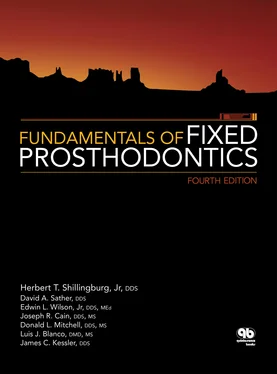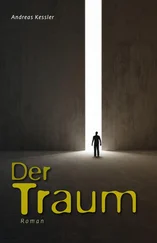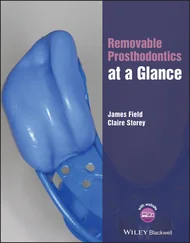38. Glickman I, Smulow JB. Alterations in the pathway of gingival inflammation into the underlying tissues induced by excessive occlusal forces. J Periodontol 1962;33:7–13.
39. Okeson JP. Management of Temporomandibular Disorders and Occlusion, ed 2. St Louis: Mosby, 1989:113.
40. von Spee FG. The gliding path of the mandible along the skull [in German]. Arch Anat Physiol 1890;16:285–294.
41. Monson GS. Impaired function as a result of a closed bite. J Am Dent Assoc 1921;8:833–839.
42. Schuyler CH. Fundamental principles in the correction of occlusal disharmony, natural and artificial. J Am Dent Assoc 1935; 22:1193–1202.
43. Stuart CE, Stallard H. Principles involved in restoring occlusion to natural teeth. J Prosthet Dent 1960;10:304–313.
44. Schuyler CH. Factors of occlusion applicable to restorative dentistry. J Prosthet Dent 1953;3:772–782.
45. Meyer FS. Can the plain line articulator meet all the demands of balanced and functional occlusion in all restorative work? J Colo Dent Assoc 1938;17:6–16.
46. Mann AW, Pankey LD. Oral rehabilitation. Part I: Use of the P-M instrument in treatment planning and in restoring the lower posterior teeth. J Prosthet Dent 1960;10:135–150.
47. Pankey LD, Mann AW. Oral rehabilitation. Part II: Reconstruction of the upper teeth using a functionally generated path technique. J Prosthet Dent 1960;10:151–162.
48. D’Amico A. Functional occlusion of the natural teeth of man. J Prosthet Dent 1961;11:899–915.
49. Stuart CE. Good occlusion for natural teeth. J Prosthet Dent 1964;14:716–724.
50. Stuart CE. Why dental restorations should have cusps. J South Calif Dent Assoc 1959;27:198–200.
51. Lucia VO. The gnathological concept of articulation. Dent Clin North Am 1962;6:183–197.
52. Katz GT. The Determinants of Human Occlusion. Los Angeles: Marina Press, 1972:vi.
53. Oliva RA, Takayama H, Hobo S. Three-dimensional study of mandibular movement using an automatic electronic measuring system. J Gnathol 1986;5:115–182.
54. Hobo S, Takayama H. Pilot study—Analysis and measurement of the amount of disclusion during lateral movement. J Jpn Prosthodont Soc 1984;29:238–239.
55. Gysi A, Kohler L: Handbuch der Zahnehikunde. Berlin & Vienna: Scheff, 1929:IV.
56. Gysi A. The problem of articulation. Dent Cosmos 1910;52:1–19, 148–169,403–418.
57. Takayama H, Hobo S. The derivation of kinematic formulae for mandibular movement. Int J Prosthodont 1989;2:285–295.
58. Takayama H, Hobo S. Kinematic and experimental analyses of mandibular movement for clinical application. Prec Mach Incorp Life Supp Tech 1989;2:229–304.
59. Kubein-Meesenburg D, Naegerl H, Meyer G, Buecking W. Individual reconstruction of palatal concavities. J Prosthet Dent 1988;60:662–672.
An articulator is a mechanical device that simulates the movements of the mandible ( Fig 3-1). The principle employed in the use of articulators is the mechanical replication of the paths of movement of the posterior determinants, the temporomandibular joints (TMJs), and, in some cases, the anterior guidance. The instrument is then used in the fabrication of fixed and removable dental restorations that are in harmony with those movements. The articulator is a tool, and, as with all tools, its value to the dentist is determined by its appropriate use.
The outer limits of all excursive movements made by the mandible are referred to as border movements . All functional movements of the mandible are confined to the three-dimensional envelope of movement contained within these borders. 1The border movements are of significance in discussing articulation because they are limited by ligaments. As such, they are highly repeatable and useful in setting the various adjustments on the mechanical fossae of an articulator. The more nearly the articulator duplicates the border movements, the more nearly it will simulate the posterior determinants of occlusion. As a result, the harmony between the fabricated restoration and the posterior determinants (ie, the TMJs) will be improved.
Articulators vary widely in the accuracy with which they reproduce the movements of the mandible. At the lower end of the scale is the nonadjustable articulator. It is usually a small instrument that is capable of only a hinge opening. The distance between the teeth and the axis of rotation on the small instrument is considerably shorter than it is in the skull, with a resultant loss of accuracy.
As the mandible moves up and down in the retruded position, the cusp tip of a mandibular tooth moves along an arc in a sagittal plane, with the center for that rotation located at the transverse horizontal axis (THA), which passes through the condyles ( Fig 3-2). If the location of the axis of rotation relative to the cusp tip differs markedly from the patient to the articulator, the radius of the arc of closure of the cusp tip may be different, producing an error. Drastic differences between the radius of closure on the articulator and in the patient’s mouth can affect the placement of morphologic features such as cusps, ridges, and grooves on the occlusal surface.
The casts mounted on a smaller articulator will have a much shorter radius of movement, and a tooth will travel a steeper arc during closure of the small articulator ( Fig 3-3). If the casts are mounted at an increased dimension of occlusion (ie, with a thick interocclusal record), the teeth will occlude in a different intercuspal position on the articulator than in the mouth. 2A slight positive error resulting in a deflective occlusal contact could develop between the mesial incline of the maxillary teeth and the distal incline of the mandibular teeth. 3
The mediolateral location of the centers of rotation (ie, the intercondylar distance) will change the radius of tooth movement, which in turn will affect the arc traveled by a tooth cusp in the horizontal plane during a lateral excursion of the mandible. On a small hinge articulator, the discrepancy between the arcs traveled by a cusp on the instrument and in the mouth can be sizable, particularly on the nonworking side ( Fig 3-4). The result is an increased possibility of incorporating a nonworking occlusal interference into the restoration.
A semi-adjustable articulator is an instrument whose larger size allows a close approximation of the anatomical distance between the axis of rotation and the teeth. If casts are mounted with a facebow transfer using no more than an approximate THA, the radius of movement produced on the articulator will reproduce the tooth closure arc with relative accuracy, and any resulting error will be slight ( Fig 3-5). Placing the casts a small distance closer to or farther from the condyles through the use of an approximate THA will produce an error of only a small magnitude during lateral excursions 4( Fig 3-6).
The semi-adjustable articulator reproduces the direction and endpoint but not the intermediate track of some condylar movements. As an example, the inclination of the condylar path is reproduced as a straight line on many articulators, when in fact it usually traverses a curved path. On many instruments, the lateral translation, or Bennett movement, is reproduced as a gradually deviating straight line, although several recently introduced semi-adjustable articulators do accommodate the immediate lateral translation.
Intercondylar distances are not totally adjustable on semi-adjustable articulators. They can be adjusted to small, medium, and large configurations, if at all. Restorations will require some intraoral adjustment, but it should be inconsequential if the restoration is fabricated carefully on accurately mounted casts. This type of articulator can be used for the fabrication of most single units and fixed partial dentures.
Читать дальше












